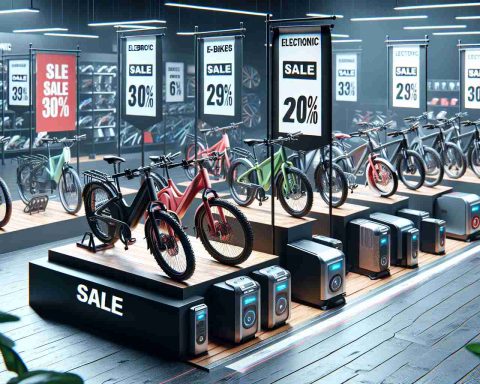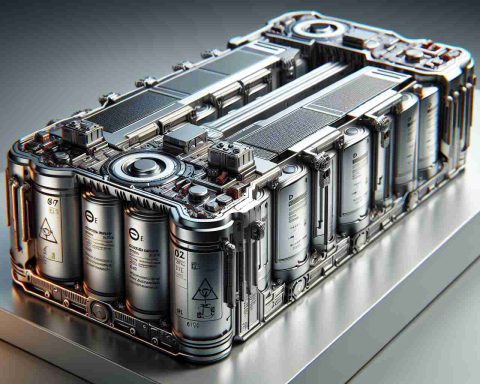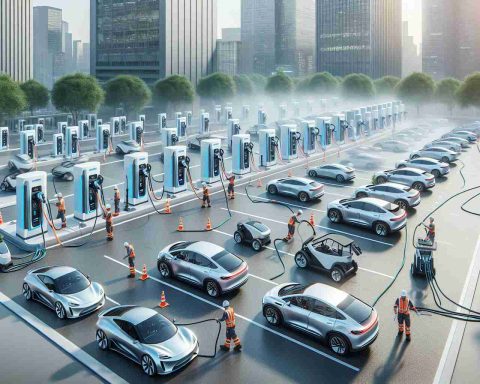- Solid-state batteries feature a solid electrolyte, enhancing safety by eliminating leaks and fire risks.
- They offer higher energy densities, resulting in lighter and more powerful batteries with extended life cycles.
- Potential benefits include faster charging times and increased range for electric vehicles, promoting EV adoption and reduced carbon emissions.
- The technology could lead to thinner and longer-lasting portable electronic devices.
- Challenges include manufacturing complexities and high production costs, but ongoing research aims to overcome these hurdles.
In the world of energy storage, a groundbreaking development is poised to redefine the future: the solid-state battery. This technology promises to overcome the limitations of traditional lithium-ion batteries, offering profound implications for industries ranging from consumer electronics to electric vehicles (EVs).
What Makes Solid-State Batteries Unique?
Unlike conventional batteries, solid-state batteries employ a solid electrolyte instead of a liquid or gel. This switch enhances safety by reducing the risk of leaks and fires, a crucial advancement for battery-operated devices. Moreover, the solid-state design is capable of achieving much higher energy densities. This means lighter, more powerful batteries with longer life cycles, traits highly sought after in the EV market.
Potential Impacts on Future Technologies
The leap to solid-state technology could drastically cut down on charging times while extending the range for electric vehicles. These improvements could be pivotal in advancing the widespread adoption of EVs, potentially minimizing reliance on fossil fuels and contributing to reduced carbon emissions. Additionally, the benefits extend to a myriad of portable electronics, from smartphones to laptops, paving the way for thinner, longer-lasting devices.
Challenges and the Road Ahead
Despite its promise, the path to commercializing solid-state batteries isn’t without hurdles. Manufacturing complexities and high production costs remain significant challenges. However, with ongoing research and investment, experts predict that these obstacles may soon be overcome, heralding a new era in energy storage.
This transformative journey of solid-state batteries represents a significant stride towards a more sustainable and efficient energy future.
Revolutionizing Energy: The Solid-State Battery Breakthrough You Can’t Ignore
In-Depth Look at Solid-State Batteries
1. What are the primary advantages and disadvantages of solid-state batteries over traditional lithium-ion batteries?
Pros:
– Safety Enhancement: Solid electrolytes minimize leakage and fire risks.
– Higher Energy Density: Greater energy storage capacity per unit weight.
– Longer Life Span: More charge cycles, ideal for long-term use in devices and vehicles.
Cons:
– Manufacturing Challenges: Complex production processes and scalability issues.
– High Cost: Currently more expensive to produce than lithium-ion alternatives.
– Temperature Sensitivity: Some solid-state batteries can suffer reduced performance in colder climates, which might limit their use in certain geographic regions.
2. How will solid-state batteries impact the electric vehicle (EV) market in the next decade?
– Market Forecast: The global solid-state battery market is expected to witness exponential growth, potentially reaching multi-billion dollar valuations by the 2030s.
– Range Expansion and Fast Charging: EVs could achieve longer driving ranges and significantly reduced charging times, enhancing consumer appeal.
– Sustainability and Adoption Trends: Increased EV adoption rates could lead to a substantial decrease in global carbon footprints, aligning with sustainability goals globally.
3. What are the latest innovations and trends in solid-state battery development?
– Material Innovations: Researchers are exploring new materials like sulfide-based and oxide-based solid electrolytes to enhance conductivity and overcome existing limitations.
– Emerging Use Cases: Beyond EVs, solid-state batteries are poised to revolutionize consumer electronics, drones, and even grid storage systems.
– Predictions and Insights: Industries are increasingly investing in solid-state technology, with predictions suggesting widespread availability and cost-competitive options emerging within the next 5-10 years.
For further exploration and updates on solid-state battery innovations, consider visiting authoritative resources such as Bloomberg, or The New York Times for comprehensive coverage on technological advancements and market implications.
This is a pivotal time for energy storage solutions, and solid-state batteries stand at the forefront of this evolution, promising to redefine boundaries and catalyze sustainable development across multiple sectors.













